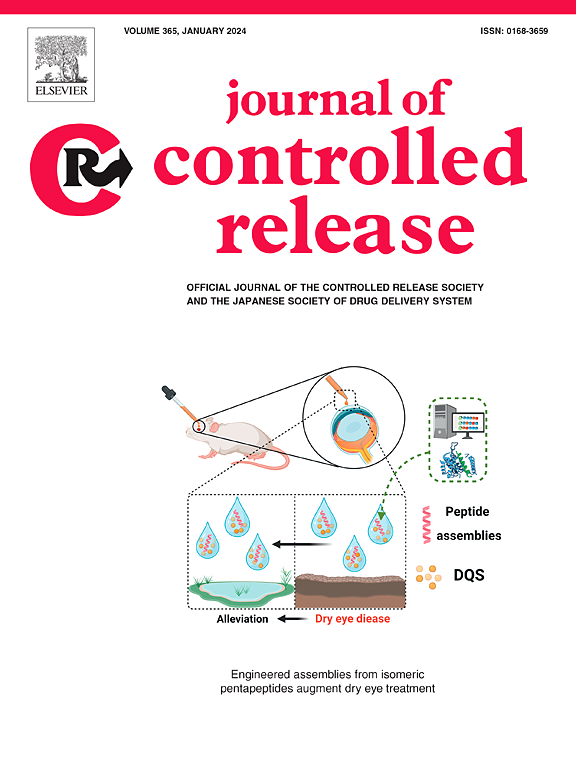Collagenase-modified polydopamine nanoparticles for safe and effective vitreolysis
IF 10.5
1区 医学
Q1 CHEMISTRY, MULTIDISCIPLINARY
引用次数: 0
Abstract
Anomalous posterior vitreous detachment (aPVD) is involved in the pathogenesis of many vitreoretinal disorders. This condition is currently managed by vitrectomy, a routine but invasive surgery which is especially challenging in patients with firm vitreoretinal adhesions. Since 1998, pharmacological vitreolysis emerged as a potential replacement or adjunct therapy to vitrectomy. Over the years, most attention was focused on enzymes, but their use has been limited mainly due to retinal toxicity. To revive the potential of enzymatic vitreolysis, we aimed to immobilize collagenase on the surface of polydopamine nanoparticles to prevent penetration into the retinal layers. We synthesized stable and functional collagenase-modified nanoparticles and were able to induce vitreous liquefaction and complete PVD ex vivo. Moreover, we demonstrated a substantial reduction in retinal toxicity upon injection in bovine vitreoretinal explants. Subsequent in vivo analysis revealed that retinal morphology and function were preserved, in contrast to free collagenase. Despite the presence of vitreous hemorrhages, which can possibly be avoided by optimization of the experimental set-up, we believe to have given the first step in the right direction towards nanotechnology-based enzymatic vitreolysis and to have opened doors for future research.

求助全文
约1分钟内获得全文
求助全文
来源期刊

Journal of Controlled Release
医学-化学综合
CiteScore
18.50
自引率
5.60%
发文量
700
审稿时长
39 days
期刊介绍:
The Journal of Controlled Release (JCR) proudly serves as the Official Journal of the Controlled Release Society and the Japan Society of Drug Delivery System.
Dedicated to the broad field of delivery science and technology, JCR publishes high-quality research articles covering drug delivery systems and all facets of formulations. This includes the physicochemical and biological properties of drugs, design and characterization of dosage forms, release mechanisms, in vivo testing, and formulation research and development across pharmaceutical, diagnostic, agricultural, environmental, cosmetic, and food industries.
Priority is given to manuscripts that contribute to the fundamental understanding of principles or demonstrate the advantages of novel technologies in terms of safety and efficacy over current clinical standards. JCR strives to be a leading platform for advancements in delivery science and technology.
 求助内容:
求助内容: 应助结果提醒方式:
应助结果提醒方式:


